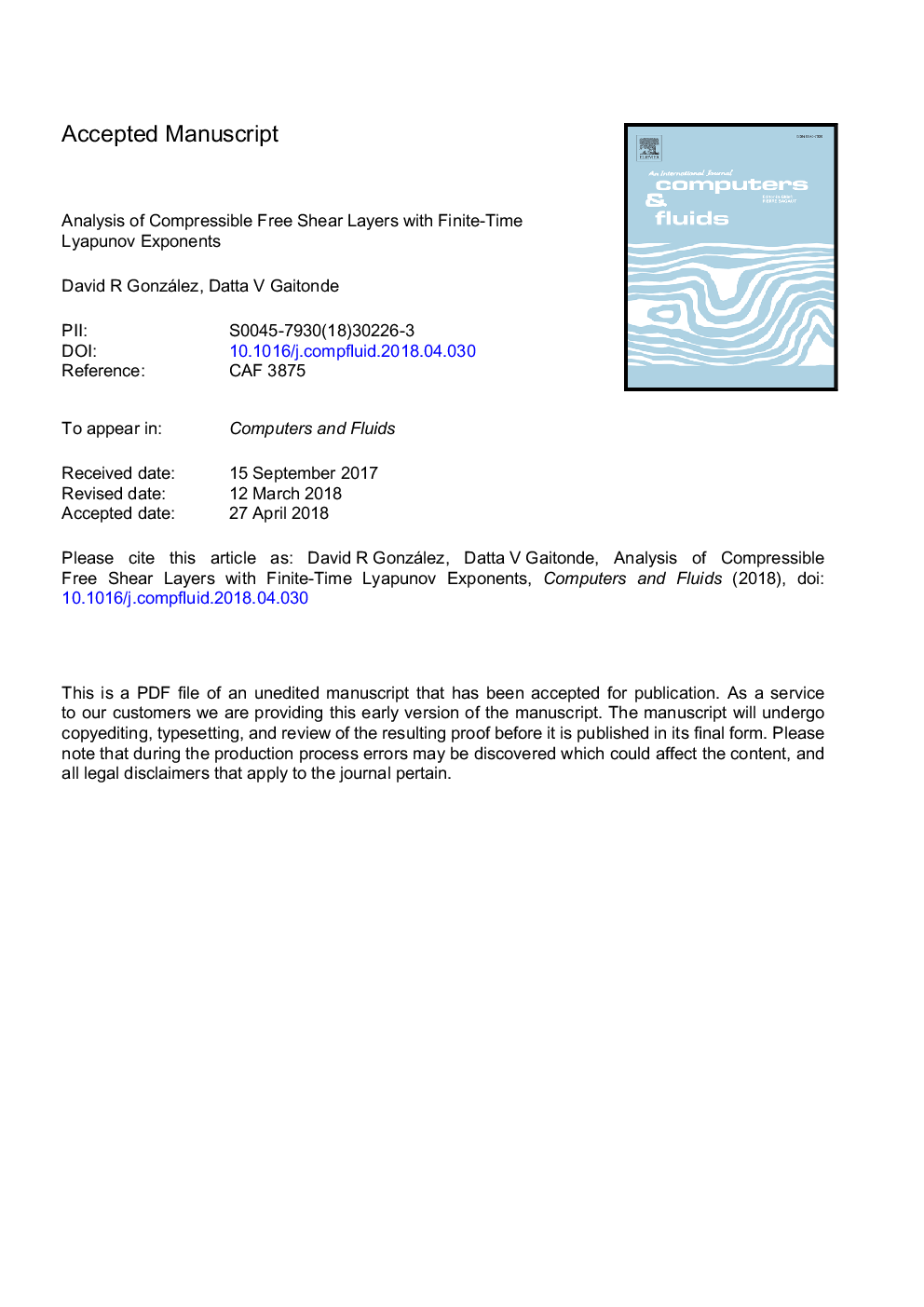| کد مقاله | کد نشریه | سال انتشار | مقاله انگلیسی | نسخه تمام متن |
|---|---|---|---|---|
| 11003774 | 1462638 | 2018 | 42 صفحه PDF | دانلود رایگان |
عنوان انگلیسی مقاله ISI
Analysis of compressible free shear layers with finite-time Lyapunov exponents
دانلود مقاله + سفارش ترجمه
دانلود مقاله ISI انگلیسی
رایگان برای ایرانیان
کلمات کلیدی
موضوعات مرتبط
مهندسی و علوم پایه
سایر رشته های مهندسی
مکانیک محاسباتی
پیش نمایش صفحه اول مقاله

چکیده انگلیسی
Finite-time Lyapunov Exponents (FTLE) can, through suitable choice of integration parameters, capture not only convecting coherent structures in compressible turbulent flows but also propagating dilatational components. This semi-Lagrangian approach thus provides an implicit sliding decomposition technique to connect hydrodynamic and acoustic features, and furthermore facilitates a direct examination of individual time-local events such as intermittency, which are often obscured by statistical techniques. The FTLE method yields attracting (also designated stable or backward-integrated) and repelling (unstable or forward-integrated) structures. In this paper, we show that FTLE offers substantial additional analysis capability in compressible flows over corresponding incompressible situations. Not only does the method establish a connection between attracting structures and the acoustic field, it also offers an effective means to elucidate finer details of the governing dynamics. This is achieved by leveraging repelling structures, as well as negative FTLE magnitudes, which complement the positive values in incompressible flows. The test bed considered is a free shear layer, specifically a validated Large-Eddy Simulation of a Mach 0.9 jet, where hydrodynamic and acoustic components interact with each other in an intricate manner. The implications of attracting and repelling FTLE structures are found to depend on whether they arise in the core turbulent region or in regions where the acoustic energy dominates. In turbulent regions, attracting structures correlate well with lower frequency acoustic components propagating downstream but repelling structures isolate the higher frequency components of the principal vortex dynamics. On the other hand, away from the highly turbulent regions, attracting structures continue to be associated with the (relatively weaker) coherent vortices while repelling structures gradually capture more of the acoustic energy and show higher correlation with the Eulerian dilatation. The joint FTLE field, defined as the difference between attracting and repelling FTLE coefficients, also reveals crucial aspects of the underlying physics. In particular, it captures hydrodynamic features at time scales representative of convection, which are shown to induce and modulate acoustic events within the potential core as they relate to entrainment and vortex interactions. In compressible flows, therefore, proper interpretation of the different components of the FTLE enables a rich, time-accurate connection between different temporal events.
ناشر
Database: Elsevier - ScienceDirect (ساینس دایرکت)
Journal: Computers & Fluids - Volume 174, 30 September 2018, Pages 46-65
Journal: Computers & Fluids - Volume 174, 30 September 2018, Pages 46-65
نویسندگان
David R González, Datta V Gaitonde,